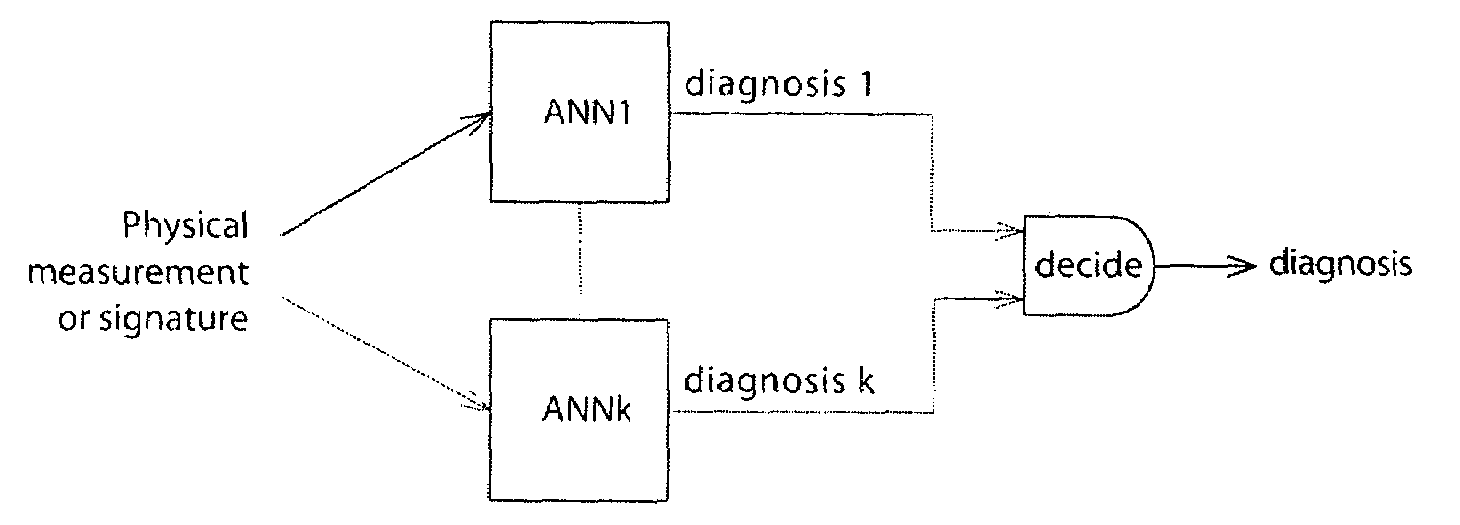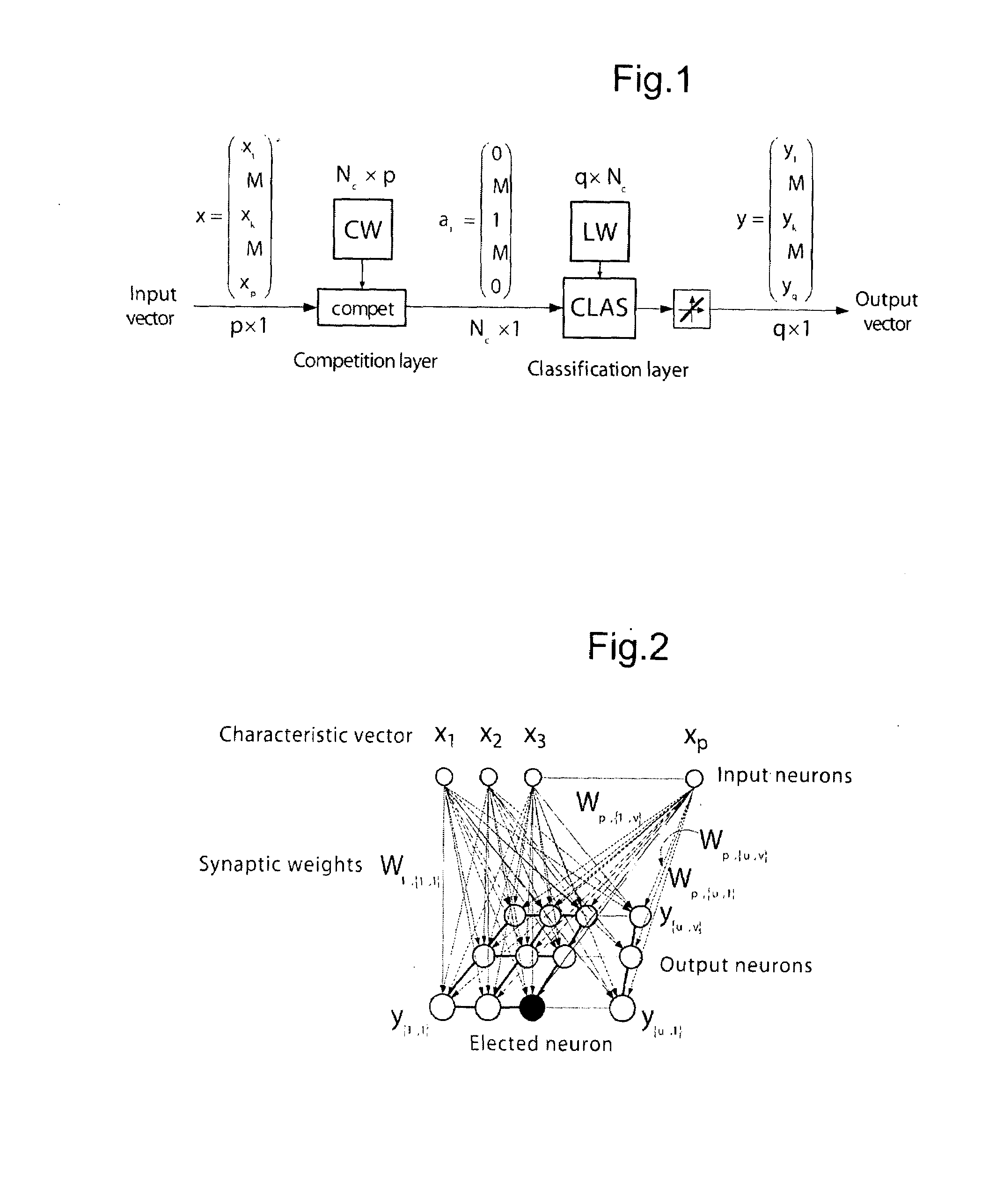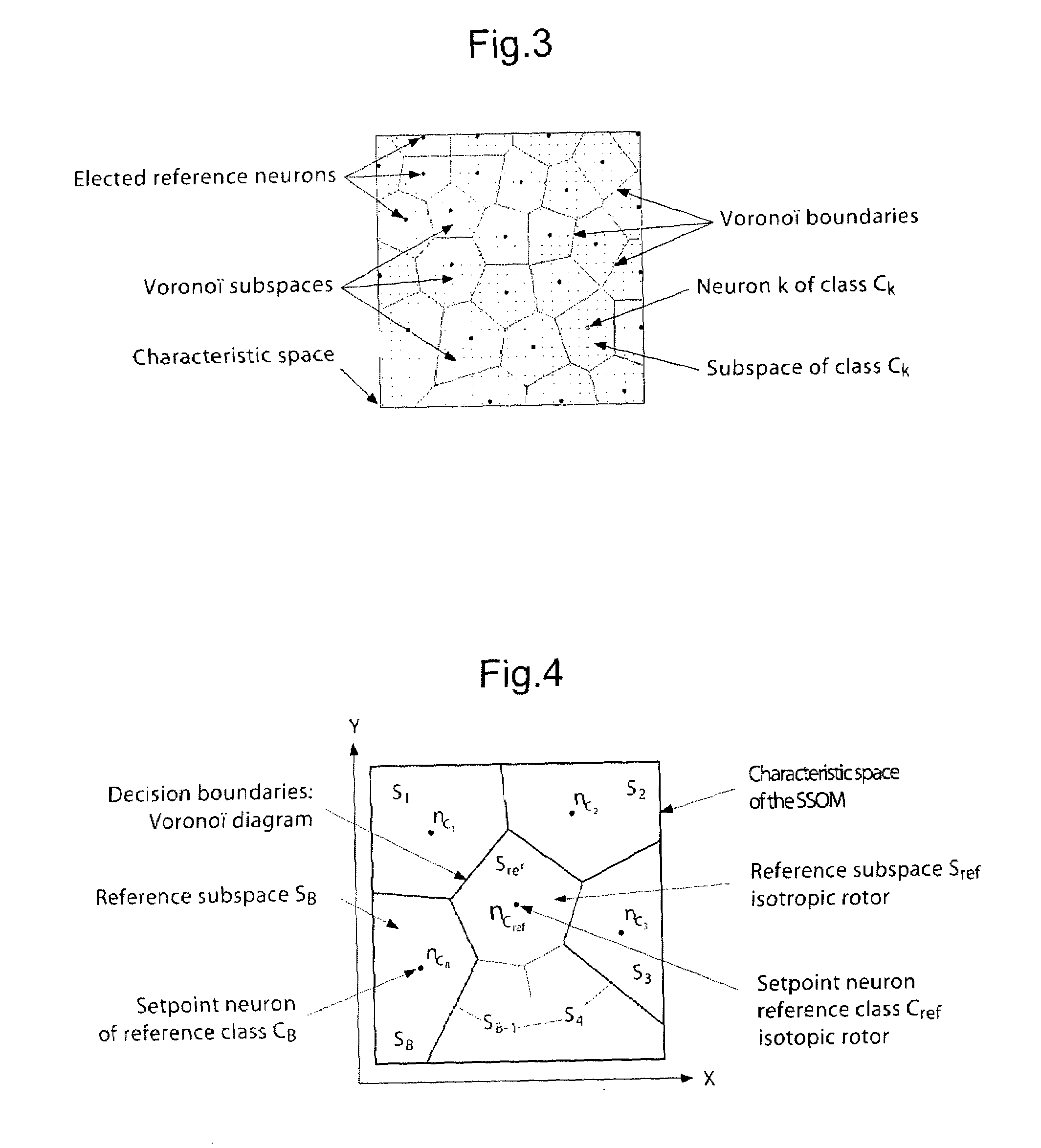Method and a system for detecting and locating an adjustment error or a defect of a rotorcraft rotor
a technology of rotorcraft and adjustment error, applied in the field of manufacturing helicopters, can solve problems such as inability to detect and locate adjustment errors or defects of rotorcraft rotors, and achieve the effect of low variance and high classification ra
- Summary
- Abstract
- Description
- Claims
- Application Information
AI Technical Summary
Benefits of technology
Problems solved by technology
Method used
Image
Examples
example 1
Classifying Signatures Measured on an AS365
[0145]The AS365 (Dauphin) is a 4-bladed helicopter. Measurements taken on an AS365 characterize the state of the out-of-adjustment rotor in two series of flights. On each flight, the adjustment errors, their points of application, and their magnitudes were different. A reference measurement (an in-adjustment rotor without any defect) was also taken.
[0146]The respective definitions of Ec relative to CB and CD were as follows:
Ec=CB⋃Cref=Cblade1⋃Cblade2⋃Cblade3⋃Cblade4⋃CrefEc=CD⋃Cref=dmass⋃drod⋃dtabs⋃Cref
[0147]The learning sample was constituted by the first series of flights. The second series constituted the sample to be classified. The parameters structuring the network and the learning were set at Niter=500, Nc=302, and σ0=3.
[0148]After learning relative to CB, it was found that the performance when classifying unlearned signatures was as follows: 90% of correct classification for an unsupervised SOM, and 100% correct classification for an...
example 2
Classifying Signatures Measured on an EC225
[0152]EC225 (Super Puma) is a 5-bladed helicopter. As in Example 1, measurements were taken during two series of flights (reference flight, flight with mass, rod, and tab adjustment errors), for errors of different amplitudes. The learning sample was constituted by the first series of flights, with the second series of flights constituting the classification sample.
[0153]The respective definitions of Ec relative to CB and CD were as follows:
Ec=CB⋃Cref=Cblade1⋃Cblade2⋃Cblade3⋃Cblade4⋃Cblade5⋃CrefEc=CD⋃Cref=dmass⋃drod⋃dtabs⋃Cref
[0154]Vibratory measurements were taken over a length of time sufficient to achieve convergence of acceleration amplitudes and phases. A Fourier transform was used to generate a plurality of vibratory signatures from each time signal. This example served to analyze the capacity of the SOM and of the SSOM to classify signatures calculated from signals at the limit of convergence. Two signature databases were used:[0155]...
PUM
 Login to View More
Login to View More Abstract
Description
Claims
Application Information
 Login to View More
Login to View More - R&D
- Intellectual Property
- Life Sciences
- Materials
- Tech Scout
- Unparalleled Data Quality
- Higher Quality Content
- 60% Fewer Hallucinations
Browse by: Latest US Patents, China's latest patents, Technical Efficacy Thesaurus, Application Domain, Technology Topic, Popular Technical Reports.
© 2025 PatSnap. All rights reserved.Legal|Privacy policy|Modern Slavery Act Transparency Statement|Sitemap|About US| Contact US: help@patsnap.com



